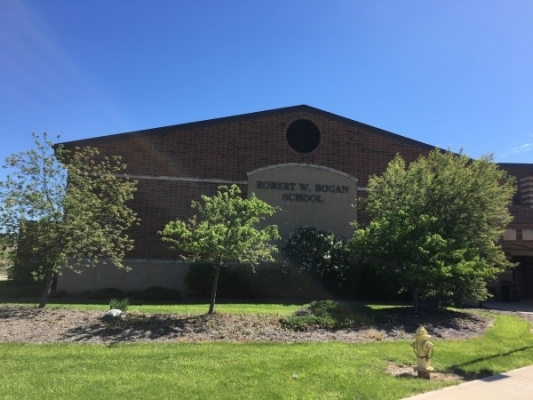EdChoice Questions Barrier Between Public and Private Schooling
EdChoice is a program in Ohio described by the Ohio Department of Education as a program that “provides students from designated public schools the opportunity to attend participating private schools. The program also provides low-income students who are entering kindergarten through 12th grade scholarship opportunities.” This program is set to expand on Feb.1, with more schools being classified as ‘underperforming.’ The program uses state tests to designate six performance markers, and if a school fails to meet any of them, they will be eligible for this program.
This program currently effects 487 Ohio schools, but none in the Talawanda School District. However, on Feb. 1, 2020, Bogan will become one of the designated schools.
Bogan Elementary an EdChoice Designated School
House Bill 9, as currently written, would change the qualifications for eligibility for these vouchers. The program, if enacted, will include 1,233 schools — an over 100% increase from previous years. There is another bill currently in the Ohio senate that would provide 10 million dollars of initial funding for these vouchers, while a more permanent solution is discussed, however this bill was turned down by the house. The house in now currently working on another bill, which would expand the program to simply be based on income. A family of four would qualify for the scholarships if their household income is below $ 78,000 per year. This is well over the federal poverty line.
This increase in eligibility would include Bogan Elementary, an elementary school in the Talawanda School District. Bogan’s principal, Jeff Winslow, as well as Talawanda School District Superintendent Ed Theroux, are both in strong opposition to this program.
“This is an attack on public education,” Winslow said.
“Our forefathers decided to keep public and private (religious) schools separate. Ohio’s EdChoice changes that and will fund private and religious schools that don’t have to take state assessments or keep the same standards. The rules for the two kinds of schools are not equal so money will be taken from Talawanda and given to other schools that are not held to the same standard.”
The money for the EdChoice Vouchers will be coming out of the Talawanda budget. Per Talawanda’s agreement with Ohio, Talawanda is provided with $ 1,400 per student. However, a K-8 student would be provided with up to a $4,650 dollar scholarship. This is a $ 3,150 difference. For grades 9-12, the scholarship is $6,000. When you subtract the state money, there is a $4,600 difference. A child would still be eligible for the scholarship their entire K-12 career, even after they graduate from a school deemed underperforming to one that does not qualify for the scholarship.
This money that does not come for the Ohio government will come directly from Talawanda’s budget — taxpayer money.
Taxpayer money raised specifically to fund public schools would be going directly into funding private schools — although private schools are not held to the same standard as public schools. Public schools are required to take standard state tests and have separation of state and church. Private schools are not required to do these same things. In addition, public schools must accept all students living in their district, while private schools can be selective in their admissions process.
“Unequal standards are not good for Talawanda or the State of Ohio,” Winslow said.
The superintendent of Talawanda School District, Ed Theroux, is also against the expansion of this school voucher program.
“EdChoice will negatively affect Talawanda School District and the 70% of Ohio public schools that are now designated as having buildings that are EdChoice eligible,” Theroux said.
“The criteria for EdChoice is flawed. The criteria is based and connected to the state per pupil funding and the report card.”
One of the schools that will be included in the expansion of this program is from Solon School District. Solon School District is one of the highest performing school districts in the state.
This new school voucher program was not only as an attack on public education, but the funding method was described by Theroux as “Unconstitutional.” Even if this program was to go into effect, it is possible that it will be challenged in court, as there is a legal precedent in the DeRolph case that decided about the inequality of the state funding system.
If the newest bill is passed, according to Theroux:
“There is not a plan to fix how districts would pay for the EdChoice so it could mean districts would be funding more students across Ohio to attend private school. Again, we get $1,400 per student WHO has attended our district. We make up the difference.”




Great piece!!!! Keep covering this issue. It’s so important.